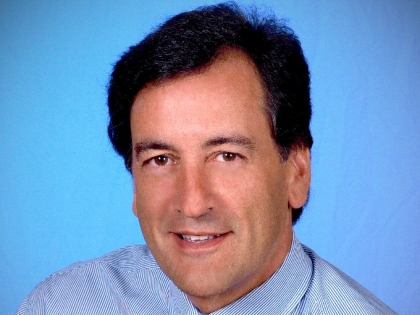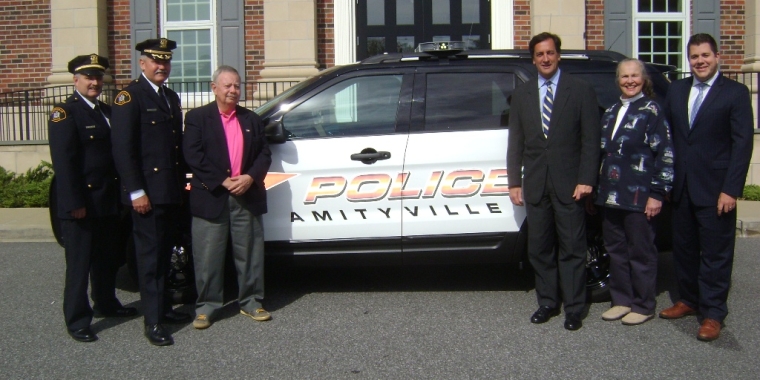
Newsday: DWI deaths drop; impaired driving persists
January 3, 2011
by Will Van Sant
Drunken-driving deaths have dropped dramatically since the early 1980s across the nation and locally - the result of tougher law enforcement, safer cars and a less-tolerant public, experts say - but the problem of impaired motorists persists on car-reliant Long Island.
The recent spate of wrong-way drivers on major highways in Nassau and Suffolk counties, most of whom face DWI charges, has spotlighted the often-lethal consequences when those who have been drinking or taking drugs get behind the wheel.
"We don't have a mass transit system, obviously, like New York City," said Nassau District Attorney Kathleen Rice, who has made fighting drunken driving a signature cause. "It puts more people in cars, which means more drunk drivers, which makes more people victims."
In the past three decades, drunken-driving deaths nationwide have been cut in half, falling from 21,113 in 1982 to 10,839 in 2009, according to figures from an Insurance Institute for Highway Safety analysis.
That trend holds in New York State, which had 836 drunken-driving deaths in 1982 compared with 320 in 2009, a decline of 62 percent, according to the institute's analysis. Nassau County saw a drop from 60 to 19 such deaths during the same period, and in Suffolk the number fell from 88 to 39, the analysis found, declines of 68 and 56 percent respectively.
On Long Island, the number of drunken-driving deaths has seesawed over the past decade, so in 2009 the number of deaths was comparable to figures seen 10 years ago, the analysis revealed.
A troubling plateau
Yet, a broader look at the data reveals that while these deaths have fallen significantly, a stubborn plateau has been reached.
Statewide, drunken-driving fatalities have hovered at or near 30 percent of all motor-vehicle-related deaths annually for about the past five years - even as stronger penalties against offenders have become law.
"We have leveled off in New York State," said Assistant District Attorney Maureen McCormick, who is chief of the vehicular crimes bureau in the Nassau DA's office. She has specialized in vehicle crimes for 25 years and intoxicated driving offenses for the past 20. "We want to break that 30 percent threshold."
Toward that end, the state created a Task Force on Impaired Driving two years ago. McCormick, who chairs the group's legislative team, said the task force is examining how DWI cases are prosecuted and handled in the court system. The group also is looking at the state's DWI and impaired-driving laws.
"One of the things that the task force is looking at is, why have we stagnated?" McCormick said.
State Sen. Charles Fuschillo (R-Merrick) - sponsor of several key measures against drunken driving over the past decade - noted that it is not only the percentage of drunken-driving deaths as compared with all vehicle fatalities that has flatlined.
Statewide from 2000 to 2009, he said, there were 500,000 DWI arrests, 76,500 of them on Long Island. And from year to year, arrests and convictions have stayed pretty constant, he said.
"That's shocking, quite frankly. You have to sit back and say, 'What is it going to take for individuals who still drink and drive to stop?' " Fuschillo said. "We need to find out why it's not decreasing here in New York State with some of the toughest penalties in the nation. And if we have to make them tougher, we will."
As the state seeks to close further loopholes and the task force does its work, those who combat drunken driving say they have years of steady progress on which to build. They credit Mothers Against Drunk Driving with having helped enact stricter penalties nationwide. They say nothing, however, has been more critical than a change in attitudes toward drunken driving, which they also credit to MADD.
Evidence of the change, they say, is easy to spot. What McCormick called a "boys will be boys" acceptance of impaired driving has given way to broader appreciation of its dangers. Ad campaigns tout the role of designated drivers. Parents are taking advantage of new tools such as personal breath-alcohol devices to monitor their kids' drinking. And in programs across the country, drunken drivers talk openly to young people about their mistakes.
One of the lucky ones
Robert Martinez, 22, said he used to be known as the "DDD," or "designated drunk driver," among friends. The joke stopped being funny in July 2008, when after consuming many beers, Martinez was "driving like a moron" in the neighborhood near his Baldwin home with a childhood pal and struck a parked vehicle.
Martinez spent 25 months without a driver's license. He did community service, watched a MADD presentation and spoke with high school students about his experience. Martinez said it was a difficult time, and awful being unable to drive and pick up a girl for a date, but he knows he was fortunate.
"I didn't hurt myself, I didn't hurt my friend and I didn't hurt anybody else," he said. "There could have been somebody walking down the street that night. And I would have been a murderer and in prison for 10 years. I was lucky enough to get a second chance, and I'm not going to blow that."
As more people have become aware of the danger of drunken driving, the law has responded.
"There has been a complete sea change in the way that we handle these cases in the last 30 years," said Emily Constant, Suffolk's chief assistant district attorney, who has worked in the DA's office since 1979. "We went from a position where a rare DWI fatality was prosecuted as a vehicular homicide or manslaughter, to almost all of them being prosecuted at the felony level."
Several state laws passed in recent years have made that change possible. Other measures include a law passed in 2009 that requires installation of ignition interlock devices on the vehicles of drunken drivers, even first-time offenders, for at least six months.
"All of these things that we wanted to see - say five, 10 years ago - are happening," said Lt. Gustave E. Kalin II of the Nassau Police Department, who supervises the testing of impaired drivers.
Those in the field say it will take time to measure how stricter laws and the interlock requirement affect drunken-driving figures in the state and on Long Island. In the meantime, they say they will seek more changes in state law. Fuschillo, for instance, said he is working on legislation that would mandate jail time for repeat DWI offenders.
Constant pointed to just such a case: a man who escaped a felony charge on his 11th DWI arrest because it had been 14 years since his last one. He'd spent those 14 years imprisoned for various crimes, including his 10th DWI.
"Frankly, that's puzzling," Constant said. "If 11 DWIs doesn't get you a permanent revocation of your license, I don't know what should."
Even if laws are strengthened and the use of ignition interlock devices proves effective, law enforcement officials stress the importance of even greater societal awareness.
Rice put it this way: Most people aren't acquainted with rapists or murderers. But many people know someone who at some point has driven while drunk, she said, and that makes it easier to dismiss the severity of the act.
"We are not where we need to be yet," Rice said of the assault on drunken driving. "It carries more of a stigma now than it did in the past, but not enough of one."
